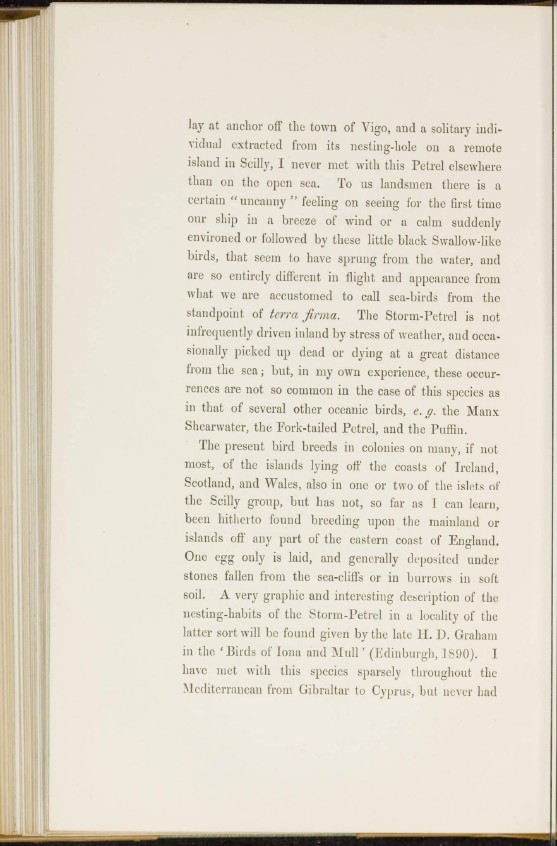
lay at anchor off the town of Vigo, and a solitary individual
extracted from its nesting-hole on a remote
island in Scilly, I never met with this Petrel elsewhere
than on the open sea. To us landsmen there is a
certain " uncanny " feeling on seeing for the first time
our ship in a breeze of wind or a calm suddenly
environed or followed by these little black Swallow-like
birds, that seem to have sprung from the water, and
are so entirely different in flight and appearance from
what we are accustomed to call sea-birds from the
standpoint of terra firma. The Storm-Petrel is not
infrequently driven inland by stress of weather, and occasionally
picked up dead or dying at a great distance
from the sea; but, in my own experience, these occurrences
are not so common in the case of this species as
in that of several other oceanic birds, e. (/. the Manx
Shearwater, the Fork-tailed Petrel, and the Puffin.
The present bird breeds in colonies on many, if not
most, of the islands lying off the coasts of Ireland,
Scotland, and Wales, also in one or two of the islets of
the Scilly group, but has not, so far as I can learn,
been hitherto found breeding upon the mainland or
islands off any part of the eastern coast of England.
One egg only is laid, and generally deposited under
stones fallen from the sea-cliffs or in burrows in soft
soil. A very graphic and interesting description of the
nesting-habits of the Storm-Petrel in a locality of the
latter sort will be found given by the late IT. D. Graham
in the ' Birds of Iona and Mull' (Edinburgh, lb90j. 1
have met with this species sparsely throughout the
Mediterranean from Gibraltar to Cyprus, but never had